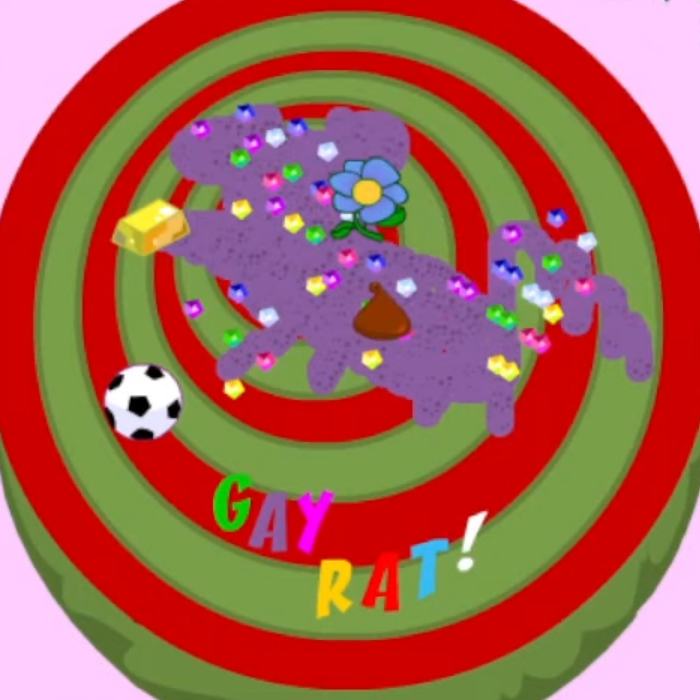So like, do you have to de-shell them or do you just eat them exoskeleton and all? Given that their diet is fresh sap and xylem water, they seem like pretty clean little bugs to eat. I'd try it.
https://www.montclair.edu/newscenter/2021/05/19/cicadas-safe-to-eat-sustainable-delicious-recipes/
spoiler
After 17 years underground, billions of periodical cicadas known as Brood X are set to emerge, and we hope you’ve brought your appetite. See, a swarm of cicadas may sound scary, but they’re quite harmless and, in actuality, can be a new food to introduce into your diet. Calling all adventurous eaters!
Assistant Professor of Anthropology Cortni Borgerson, whose research focuses on natural resource use, sustainability and food security, says that the fact that they make a tasty snack is just one of the wonders of cicadas.
“Brood X cicadas are one of the world’s most incredible animal phenomena,” says Borgerson. “In a year where few of us may be traveling to see natural wonders like Africa’s great migration, or the elephant gathering of Sri Lanka, we are incredibly privileged to have this rare spectacle occurring in our very own backyards. Brood X provides an infusion of nutrients into the ecosystem, and humans have been enjoying this event for its sights, sounds and taste for millenia.”
Eating cicadas (and other bugs) is sustainable and nutritious
Many may associate the idea of eating bugs with survival reality shows, but consider this: Not only can insects actually make for a great and tasty bite when thoughtfully prepared (see recipes below), they’re also a nutritious meat alternative high in protein and minerals, and are a sustainable food source. Indeed, they may be small, but bugs can have a mighty big impact on humans.
“Insects are an important source of food for more than two billion people on Earth, including many food cultures within the United States,” says Borgerson. “These little meats are not only a mainstream food source, they’re also a more sustainable choice than other species of livestock, which can require a lot of land, water and feed. Embracing food diversity and incorporating insects and other traditional foods into our diets isn’t only a great way to connect with our cultures and our natural environments, it’s also a key step toward living sustainably.”
Where to find cicadas to harvest
Annual cicadas can be found toward the end of the summer, emerging mostly in parks, forests, other wooded areas and even in your backyard. These are safe places to collect them once they’ve shed; basically anywhere you’d feel safe keeping a garden is a good bet. Avoid collecting and eating cicadas from places with a history of industrial use.
As for Brood X, you’ll need a map to find these periodical cicadas – and your best bet is to look for where they most commonly popped up last time around. The U.S. Fish and Wildlife Service offers a map of where the Brood X cicadas are expected to emerge, by county. For a breakdown by towns in New Jersey, check out this comprehensive list from NJ.com.
“You’ll be able to hear when you’re close,” says Borgerson. “These cicadas live as nymphs underground for 17 years, and then tunnel up through the ground to the surface where they shed into their winged adult phase, living only 4-6 weeks. Cicada are tastiest in their teneral stage, which is right after they’ve shed into their adult forms, but are still pale white before their exoskeletons have hardened.
“So at dusk, look for those wingless nymphs and enjoy the incredible show as they shed and transform and slowly inflate their new wings. Then pop a few into a bag and take them home to freeze for about 30 minutes before you prepare them.”
Cicadas, a gateway bug to entomophagy
If you’re curious about entomophagy (the practice of eating insects, especially by humans), cicadas are a great place to start. Unlike other bugs that can have “crunchy exoskeletons and wings,” teneral cicadas have a nutty, green, almost peeled shrimp-y look, taste and texture similar to the crustaceans.
“You can add them to any of your favorite dishes,” says Borgerson. “They don’t need peeling or extensive prepping, just pan fry them or parboil and toast them in the oven, and then use them like you would any of their crustacean relatives. Personally, I love them by themselves on toothpicks as an appetizer or in tacos, where you can use the toppings to bring out a lot of their green spring flavors.”
Before you know it, you may enjoy eating cicadas so much that you’ll move on to toasted cricket snacks, green ant gin, grasshoppers in chapulines tacos and more. Don’t eat cicadas if you’re allergic to shellfish
Cicadas have a similar chitinous exterior as shellfish, so while there’s no overwhelming evidence that those with allergies have had reactions after eating cicadas, there’s not much research in its favor, either. “A shellfish allergy increases the likelihood that you will be allergic to cicada, so it’s better to be safe than sorry and abstain from land arthropods if you can’t eat their sea swimming cousins.”
Can animals safely eat cicadas?
OK, so what happens if you’re so busy munching on your new favorite snack that you don’t realize your beloved pet just ate a cicada or two (or more)? “Many mammals and birds are about to feast on the periodic cicadas, so don’t be surprised if your pet cat, dog, or backyard fowl indulge a little as well,” says Borgerson. “There’s nothing to be worried about — cicadas are high in protein and their chitin is great for gut health.”
If you’re curious about entomophagy (the practice of eating insects, especially by humans), cicadas are a great place to start. Unlike other bugs that can have “crunchy exoskeletons and wings,” teneral cicadas have a nutty, green, almost peeled shrimp-y look, taste and texture similar to the crustaceans.
“You can add them to any of your favorite dishes,” says Borgerson. “They don’t need peeling or extensive prepping, just pan fry them or parboil and toast them in the oven, and then use them like you would any of their crustacean relatives. Personally, I love them by themselves on toothpicks as an appetizer or in tacos, where you can use the toppings to bring out a lot of their green spring flavors.”
Cicadas have a similar chitinous exterior as shellfish, so while there’s no overwhelming evidence that those with allergies have had reactions after eating cicadas, there’s not much research in its favor, either. “A shellfish allergy increases the likelihood that you will be allergic to cicada, so it’s better to be safe than sorry and abstain from land arthropods if you can’t eat their sea swimming cousins.” Can animals safely eat cicadas?
I'm definitely giving these a try this year.
Exaxtly, Land Shrimps. No much difference between shrimps and cicades or grasshoppers. Same as in schrimps and crabs, you must put of the exosqueleto and wings. snails are also in the diet in a lot of countries, the girls even smear their lips with crushed insects (Carmine, made from Dactylopius coccus)
So. Guess what I'm allergic to...
My issue with "You will eat bugs" isn't eww, it's "Guess I'll die."
You can have an allergy to any food, others are allergic to peanuts, strawberries or beef. It is an individual problem that does not prevent including shrimps or grasshoppers in the diet of people who like them. Things of custom and tradition. But the offer is one thing and the obligation to eat them is another, which does not exist.
Oh, I know that. I don't have any real complaint about the movement, was more mocking people like Alex Jones getting bent out of shape over ir. However, it's so suggested as protein replacement in futurology, and for a greener future. I'm all for that (and despite not being vegan, I support veggie protein/synthetic meat options too) but I'm just worried about diminished options for myself. I wouldn't put my wants over others needs though, so if it comes down to it having a smaller dietary choices is what I'll have to do, and I've done it before (eggs were a favorite of mine but I developed an allergy to them about a year or two ago.)






